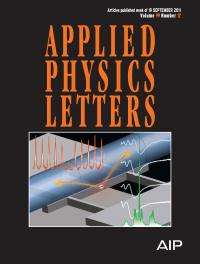Researchers efficiently extract photons from single semiconductor quantum dots directly into an optical fiber

(PhysOrg.com) -- Researchers from the NIST Center for Nanoscale Science and Technology have led the development of a new technique for efficiently out-coupling photons from epitaxially-grown quantum dots directly into a standard single-mode optical fiber.
Single epitaxially-grown semiconductor quantum dots are potentially bright and stable sources of “on-demand” single photons for many applications in quantum information processing and communications. However, because these quantum dots are embedded in a high-refractive index semiconductor, total internal reflection limits the photon flux escaping the semiconductor to a small fraction (< 1 %) of the original emitted light.
The team of researchers from NIST, the University of Maryland, the University of Regensburg, and the University of Rochester has developed an approach that circumvents this limitation, resulting in a collection efficiency of 6 % into a single-mode optical fiber, with broadband spectral operation over tens of nanometers. Each quantum dot is embedded in a suspended GaAs channel waveguide with a width and thickness of about 200 nm and a length of a few micrometers.
Rather than collecting the small amount of emission from a selected quantum dot that escapes this waveguide vertically into free-space, an optical fiber taper waveguide captures some of the larger fraction of that quantum dot’s emission which is trapped in the semiconductor. The taper waveguide is a standard 125 µm-diameter, single mode optical fiber that is gradually tapered to a diameter of about 1 µm along an approximately 1 cm-long section.
The two waveguides form a directional coupler, a common device used in lightwave systems to transfer power between adjacent waveguides through evanescent coupling. Photon correlation measurements confirm the single photon nature of the out-coupled quantum dot emission. By using single mode optical fibers typical to lightwave systems, the new technique is designed to be compatible with many quantum information processing applications. Finally, detailed simulations predict that the collection efficiency can be improved by an additional factor of 5 if the location of the quantum dot can be precisely controlled.
More information: Efficient quantum dot single photon extraction into an optical fiber using a nanophotonic directional coupler, M. Davanço, M. T. Rakher, W. Wegscheider, D. Schuh, A. Badolato, and K. Srinivasan, Applied Physics Letters 99, 121101 (2011). apl.aip.org/resource/1/applab/v99/i12/p121101_s1
Provided by National Institute of Standards and Technology



















